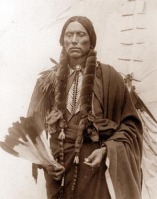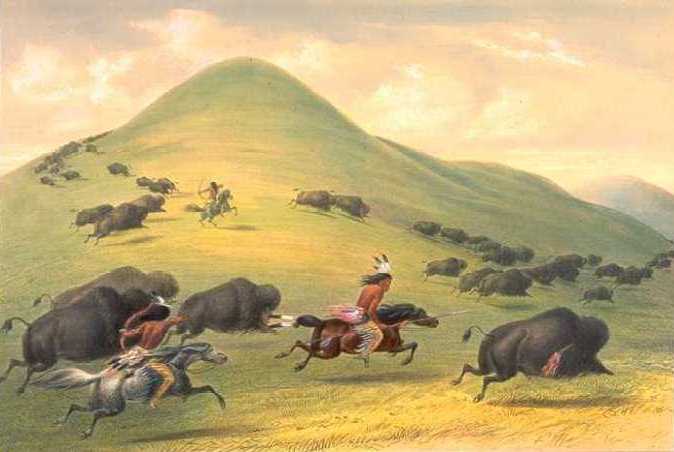


Even my fiction reading favored the Indian (or at least sympathized with their plight). It was a kid’s book so the more gruesome details of the war against the Seminoles didn’t figure in the narrative but I understood that the white man had been grossly unjust to the Indian. In particular I remember a YA biography of the Seminole chieftain Osceola (giving me the animus I bear toward Andrew Jackson to this day).

Subsequent reading (remember, I’m not the Grizzly Adams type) led me to other works sympathetic to the Native perspective. It also tended to focus exclusively on Plains Indians, blinkering my perception of non-Plains tribes for the longest time. Admittedly it was a highly white-washed (there’s a loaded word!) version that stressed the most admirable aspects of Indian culture (at least “admirable” in Anglo eyes) and ignored the complexities and less savory history of relations between Indians and Europeans (and between Indians and Indians). I never got beyond the Cub stage, truth be told, and my parents were “cool” with that.) I bring this episode in my life up because it was as a Scout that I first encountered the Native American. (Don’t fear that this diversion is going to descend into horror stories about mental and physical abuse – happily my life as a Scout was quite banal. Thus, despite little aptitude or interest, I was duly enrolled in the Cub Scouts and spent summer weekends attending den meetings and going on the occasional camping trip. I never got beyond the Cub stage, truth be told, and my parents w When I was growing up in eastern Missouri it was de rigueur that the man-children of the clan become Boy Scouts. When I was growing up in eastern Missouri it was de rigueur that the man-children of the clan become Boy Scouts. Clements Center for Southwest Studies, Southern Methodist University.more Published in Association with The William P.

With extensive knowledge and deep insight, the author brings into clear relief the Comanches’ remarkable impact on the trajectory of history. Pekka Hämäläinen shows in vivid detail how the Comanches built their unique empire and resisted European colonization, and why they fell to defeat in 1875. It is a story that challenges the idea of indigenous peoples as victims of European expansion and offers a new model for the history of colonial expansion, colonial frontiers, and Native-European relations in North America and elsewhere. This compelling and original book uncovers the lost story of the Comanches. Yet, until now, the Comanche empire has gone unrecognized in American history. This powerful empire, built by the Comanche Indians, eclipsed its various European rivals in military prowess, political prestige, economic power, commercial reach, and cultural influence. In the eighteenth and early nineteenth centuries, a Native American empire rose to dominate the fiercely contested lands of the American Southwest, the southern Great Plains, and northern Mexico. This powerful empire, built by the Comanche Indians, eclipsed its various European rivals A groundbreaking history of the rise and decline of the vast and imposing Comanche empire A groundbreaking history of the rise and decline of the vast and imposing Comanche empire In the eighteenth and early nineteenth centuries, a Native American empire rose to dominate the fiercely contested lands of the American Southwest, the southern Great Plains, and northern Mexico.


 0 kommentar(er)
0 kommentar(er)
